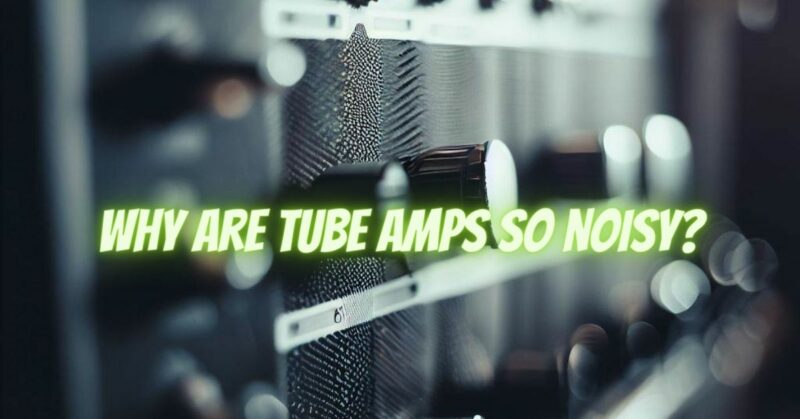Tube amplifiers are beloved for their warm and rich tones, but they can sometimes exhibit an inherent level of noise that can be bothersome for guitarists and bassists. While some level of noise is normal in tube amps, understanding the factors contributing to the noise can help mitigate and manage it effectively. In this article, we will explore why guitar/bass tube amps can be noisy and provide insights into how to address and minimize the noise for a more enjoyable playing experience.
- Tube Microphonics:
One of the primary reasons for noise in tube amps is a phenomenon known as tube microphonics. Tubes are sensitive to vibrations, and if a tube becomes microphonic, it can pick up external sounds or even internal vibrations within the amp itself. This can manifest as a ringing, rattling, or feedback-like noise. To address this issue, try gently tapping each tube with a pencil while the amp is on to identify any microphonic tubes. Replacing the problematic tube with a new one can often alleviate the issue.
- Grounding Issues:
Inadequate grounding can contribute to noise in tube amps. Ground loops, which occur when multiple devices in an audio system have different ground references, can introduce hum and buzzing sounds. To mitigate grounding issues, ensure that all components are properly grounded and use high-quality cables with good shielding. Additionally, consider using power conditioners or isolation transformers to eliminate ground-related noise.
- Interference from External Sources:
Tube amps can be susceptible to picking up interference from external sources such as fluorescent lights, computer monitors, or certain electrical devices. This interference can manifest as buzzing, humming, or radio frequency (RF) noise. To minimize external interference, keep your amp away from potential sources of electromagnetic radiation. Experiment with different amp placements and orientations to find a position with reduced interference.
- Aging Components:
As tube amps age, certain components, such as capacitors and resistors, can degrade, leading to increased noise levels. These components may need to be replaced periodically to maintain optimal performance. If you notice a significant increase in noise over time, it may be worth consulting a qualified technician to inspect and replace any aging components.
- High Gain Settings and Pickup Sensitivity:
Tube amps tend to amplify any inherent noise generated by the guitar or bass pickups, especially when high gain settings are used. Single-coil pickups, in particular, can be more susceptible to noise compared to humbuckers. Lowering the gain settings, using noise gates, or experimenting with pickup height adjustments can help reduce noise introduced by the pickups.
- Environmental Factors:
Environmental factors, such as electrical wiring in the venue or building, can introduce noise into the amp. Poorly wired or unbalanced power outlets, electrical interference from nearby equipment, or inadequate power supplies can contribute to noise issues. When possible, try different power outlets or use power conditioners to regulate the electricity flowing into the amp and minimize environmental noise.
Conclusion:
While guitar and bass tube amps can exhibit some inherent noise, understanding the factors contributing to the noise can help you address and mitigate the issue. Tube microphonics, grounding issues, external interference, aging components, high gain settings, and environmental factors can all contribute to the noise. By implementing the suggested measures, such as replacing microphonic tubes, improving grounding, minimizing external interference, maintaining components, adjusting gain settings, and considering environmental factors, you can significantly reduce the noise in your guitar or bass tube amp, allowing you to fully enjoy the rich and captivating tones these amplifiers are known for.


